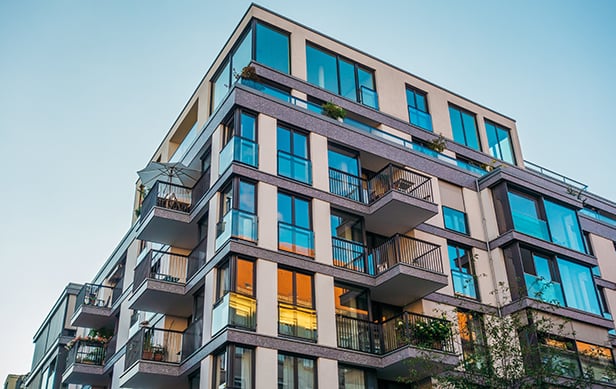GlobeSt.com: What does your investment in the Comerica Tower say about your approach to office markets?
Mayfield: In every single market in the US, there are quality assets, more in some markets and fewer in others, but invariably there are some assets in every market that are absolute gems regardless of what the general perception is about the city or the state. We have sought to acquire those absolute gems within the marketplace, which explains our interest in Comerica. As we invest around the country, we have a basis for making a relative comparison and determining that a particular market is a good place to invest. In other words, we are not investing in Detroit because we don't have anywhere else to invest. It's because we think it presents excellent opportunities for investors.
GlobeSt.com: What are some of the other markets you are looking at for future investments?
Mayfield: For the next 12 to 18 months, we are focusing on Florida, North Carolina, Northern Virginia, Southern Maryland, Boston, Washington, DC and Providence, RI. Our rationale is that because the market is changing so much, we are confident that those markets still have some fundamental strength, and/or they have a product type that we are looking to acquire and that we can acquire at a reasonable price, particularly a price relative to replacement cost.
GlobeSt.com: What percentage of your portfolio is invested in office properties and what are some of the other property types you invest in?
Mayfield: Our portfolio today is about 55% office, 30% retail, 10% industrial and 5% multifamily. We decided about two and a half years ago that we would start taking a closer look at multifamily because it was clear to us that interest rates were starting to move up and that the number of housing sales on a quarterly basis was starting to decline. We are looking to make multifamily about 40% of the portfolio, taking the place of retail. Office will continue to be a very significant portion of our portfolio.
GlobeSt.com: Are you looking at both office and multifamily investments in all of your geographic target markets?
Mayfield: Some are more likely to be office markets for us and in others we are more likely to look at apartments. We are more likely to buy apartments in Florida, but we are more likely to focus on office in North Carolina and the DC Metro area. We are more likely to look for and try to buy both office and multifamily in Providence and primarily office in Boston.
GlobeSt.com: What types of office investments do you look for--core or value-add--and in what price range?
Mayfield: We look at both core and value-add. For value-add deals, our sweet spot is between $15 million and $20 million. The reason we stay in that range, although we will go higher, is that there is just so much more money and so many bigger players out there that are chasing the deals of $40 million and up on value-add transactions. At the $15-million to $20-million range, we are typically competing against entrepreneurs and other investment firms similar in size to us. On core properties, we will acquire in the $50-million to $100-million range.
GlobeSt.com: What size multifamily investments do you look for?
Mayfield: The prices are about the same, in the $15-million to $20-million range, but the property has to be at least 100 units, and even 100 units is on the small side for us. Something like 200 to 250 units is ideal because of the management efficiencies.
GlobeSt.com: Going back to some of those geographic markets you mentioned, can you explain why you favor certain property types in each market?
Mayfield: We like office in North Carolina because it is probably one of the strongest office markets in the US, particularly in Charlotte and Raleigh, so we are looking to acquire in Charlotte, which is a great, business-friendly environment. In terms of multifamily, the residential condominium market is going through a really difficult time in Southern Florida. So we look at say, the Boca Raton area north to acquire multifamily because there is a lot of multifamily inventory that has been acquired with the intent to convert it into condominiums. A lot of that inventory is on the books of lenders, insurance companies or entrepreneurs who need to get out very quickly. We think we can buy it, hold it and operate it as apartment buildings. The reason we think of Southern Florida in terms of multifamily and not office is that we just have not been able to identify any value-add office opportunities in Florida, particularly in Southern Florida. As we move up farther north in Florida, there are better opportunities, but our concern there is market fundamentals. What we struggle with, on an analytical basis, is whether the small and medium-sized local and regional firms that make up much of the office tenant base are going to be able to continue to expand as the economy slows down. In a couple of instances we've concluded 'no' and we've moved on.
GlobeSt.com: Has the turmoil in the capital markets altered your investment strategies?
Mayfield: The CMBS market is pretty much closed as we speak so we are looking at a couple of ways of acquiring properties. One, we are acquiring properties where we can assume existing attractive debt. That today is a relatively easy proposition for us, but it reduces the number of properties we would go after if that were our only strategy. The second strategy is to look at properties where we go to banks that are doing balance sheet lending. While the banks are offering rates that still may be relatively attractive, we now are having discussions about partial guarantees, which is something that was not even a factor in the CMBS market. The reality is, if we choose to do it--and we haven't gotten to this place yet--how many partial guarantees can you actually give? And how much equity can we put into transactions until it starts to hurt our returns? If you're putting a certain amount of equity into a property, you almost might as well go ahead and pay cash. But if you are buying for cash, you limit the number of properties you can buy. So that's the challenge we have right now.
© 2025 ALM Global, LLC, All Rights Reserved. Request academic re-use from www.copyright.com. All other uses, submit a request to [email protected]. For more information visit Asset & Logo Licensing.







